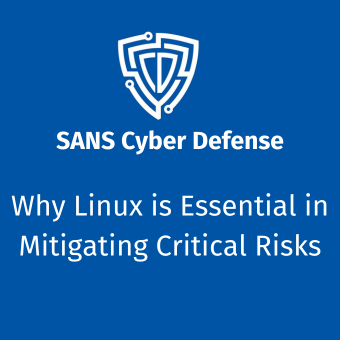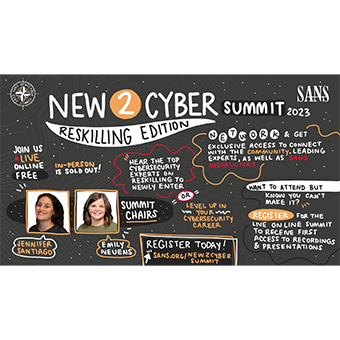What is Linux?
Linux is an open-source operating system that is an alternative to proprietary operating systems like Microsoft Windows and macOS. It was initially developed as a hobby by Linus Torvalds in 1991. It has since evolved into a powerful and versatile operating system used worldwide. One of the key features of Linux is its distribution model, where different organizations and communities create their own versions of Linux called distributions or distros. Some popular Linux distributions include Ubuntu, Fedora, Debian, and CentOS.
Why Use Linux?
There are several compelling reasons to use Linux as your operating system:
- Open-source nature: Linux's source code is freely available, allowing users to view, modify, and distribute it as per their requirements. This openness promotes transparency, security, and innovation.
- Stability and reliability: Linux is known for its stability and reliability. It is widely used in servers and critical systems due to its ability to run for long periods without requiring a reboot. This makes it a popular choice for both personal and enterprise use.
- Flexibility and customization: Linux offers a high degree of flexibility and customization. Users can choose from a wide range of desktop environments, software packages, and system configurations, tailoring their Linux experience to suit their needs.
- Security: Linux is inherently secure, mainly due to its design principles and the collaborative nature of the open-source community. Rapid bug fixes, regular security updates, and the ability to audit the source code contribute to Linux's reputation as a secure operating system.
- Vast software ecosystem: While Linux may not have the same quantity of software as some other operating systems, it offers a rich and diverse ecosystem of applications. Many popular software tools and frameworks, such as the GNU tools, Apache web server, and the Python programming language, have their roots in the Linux ecosystem.
How Does Linux Work?
Linux follows a monolithic kernel design, where the kernel acts as the core component of the operating system, managing hardware resources, providing low-level services, and facilitating communication between software and hardware. It handles tasks such as process management, memory management, device drivers, and file system access.
On top of the kernel, Linux distributions include various software components, such as libraries, utilities, and graphical interfaces, to create a complete operating system. These components work together to provide a user-friendly environment and support a wide range of applications.
Linux utilizes a multi-user, multitasking model, allowing multiple users to run multiple processes simultaneously. It employs a hierarchical file system, similar to other Unix-like operating systems, where files are organized in a tree-like structure.
How Does Linux Differ from Other Operating Systems?
Linux differs from other operating systems in several ways:
- Open-source nature: Unlike proprietary operating systems, Linux is open-source, meaning its source code is freely available. This allows users to customize and modify the operating system to suit their needs, fostering a collaborative and innovative ecosystem.
- Kernel architecture: Linux follows a monolithic kernel architecture, where the kernel performs most operating system functions. In contrast, some other operating systems, such as macOS, use a hybrid kernel architecture that combines monolithic and microkernel elements.
- Software distribution model: Linux distributions are typically community-driven and provide a vast range of software packages through centralized package management systems. This makes it easy to install, update, and manage software applications seamlessly.
- Hardware support: Linux has a reputation for excellent hardware support, with a wide range of drivers available for various hardware components. It can run on diverse hardware platforms, from embedded systems to supercomputers, making it highly versatile.
- Philosophy and development model: Linux development follows a collaborative and distributed model. It is driven by a large community of developers worldwide who contribute to its continuous improvement. This community-oriented approach encourages transparency, innovation, and shared knowledge.
What is the Difference Between Unix and Linux?
Linux and Unix are often mentioned together due to their similarities, but they are distinct entities:
- Origins: Unix was developed in the 1970s at Bell Labs, while Linus Torvalds created Linux in the early 1990s.
- Source code and licensing: Unix source code is typically proprietary, and different versions of Unix may have different licensing terms. On the other hand, Linux is open source, and its source code is freely available under licenses such as the GNU General Public License (GPL).
- Certification: Unix systems can be certified as compliant with specific standards, such as the Single UNIX Specification (SUS). Linux distributions are not certified as Unix, but they often adhere to Unix-like standards and conventions.
- Variety and fragmentation: There are multiple Unix variants, such as Solaris, AIX, and HP-UX, each developed and maintained by different vendors. As an open-source project, Linux has various distributions, each offering its features and package management systems.
- Community and development: Unix development is typically controlled by specific vendors, while Linux development is a collaborative effort involving a global community of developers.
How Can I Get Started Using Linux?
For starters, download our Linux Essentials Cheat Sheet.
If you're interested in getting started with Linux, here are some steps you can follow:
- Choose a Linux distribution: There are numerous Linux distributions available, each with its own strengths and focus. Ubuntu and Linux Mint are popular choices for beginners, offering user-friendly interfaces and extensive documentation. Fedora and openSUSE are known for their up-to-date software packages, while Debian and CentOS focus on stability.
- Create a bootable USB or DVD: Download the ISO file of your chosen Linux distribution and create a bootable USB drive or burn it onto a DVD. This will allow you to install Linux on your computer.
- Try Linux without installing: Most Linux distributions offer a "live" mode, allowing you to run the operating system directly from the USB or DVD without installing it. This lets you experience Linux and ensure hardware compatibility before committing to installation.
- Install Linux: If you're ready to make Linux your primary operating system, follow the installation instructions provided by your chosen distribution. You can install Linux alongside your existing operating system or replace it entirely.
- Explore and learn: Once Linux is installed, take the time to explore the system and its features. Familiarize yourself with the package manager, the desktop environment, and the command-line interface. There are plenty of online tutorials, forums, and communities dedicated to Linux that can help you learn and troubleshoot.
Remember that learning Linux takes time and patience. Be open to experimenting, asking questions, and seeking guidance from the vibrant Linux community. With persistence, you'll gain confidence and proficiency in using Linux as your operating system of choice.
Learn more about Linux by taking SEC406 Linux Security for InfoSec Professionals.





